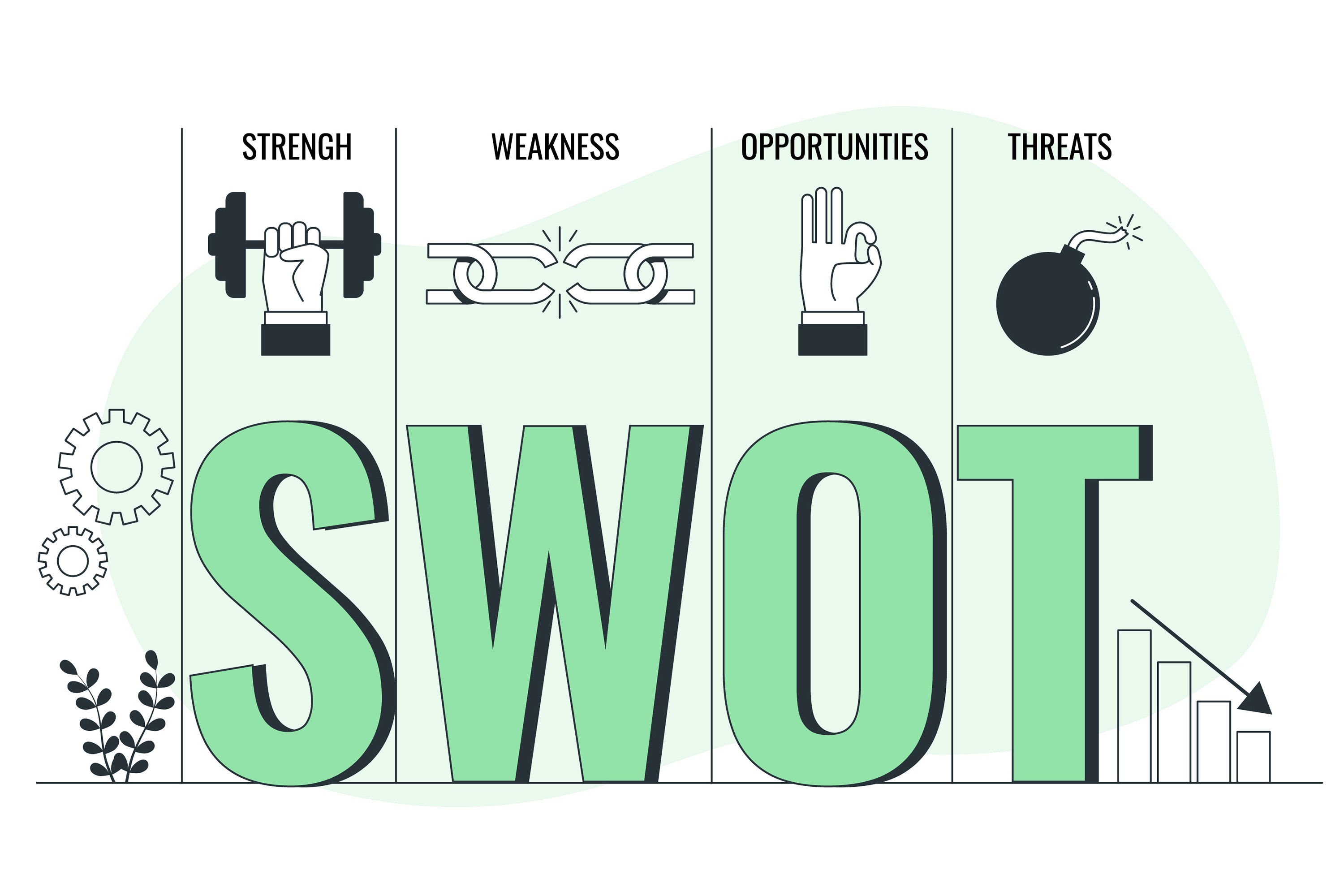Excecution
•
3 mins
6 November 2024
What are OGSM and SWOT analysis?
Strategic planning is essential for organizations that want to grow and be successful in an ever-changing market. Two commonly used methods for this are OGSM and SWOT analysis. Both tools help companies clarify their goals and set a clear direction, but they do this in different ways.
OGSM stands for Objectives, Goals, Strategies, and Measures. This method provides a structured approach to translating an organization's vision into concrete, measurable objectives. It helps companies to bring focus to their strategy and ensures that everyone within the organization is aligned. SWOT, on the other hand, is an analytical method that looks at the Strengths, Weaknesses, Opportunities, and Threats of an organization. This tool provides insight into the internal and external factors affecting a company's success.
The functioning of OGSM and SWOT analysis
When applying OGSM, organizations start by formulating their overarching objective (Objective). Next, specific, measurable goals (Goals) are established that contribute to achieving this objective. Strategies are developed to realize these goals, and finally, concrete metrics (Measures) are set to monitor progress. This systematic approach ensures that all activities within a company contribute to the main objective.
SWOT analysis works differently. Here, an organization initially maps out its internal strengths and weaknesses. Then, external opportunities and threats are identified. By weighing these four elements against each other, a company gains insight into its position relative to the market and competitors. This helps in making strategic choices and determining priorities in the business strategy.
Practical applications of OGSM and SWOT analysis
OGSM is particularly effective for organizations that need a clear, actionable strategy. It helps simplify complex plans into manageable, measurable objectives. Companies struggling with a lack of focus or difficulty in translating their vision into concrete actions can greatly benefit from this method. OGSM ensures that everyone within the organization understands what the goals are and how they can contribute to them.
SWOT analysis, on the other hand, is ideal for companies that want to get a good picture of their position in the market. It is an excellent starting point for strategic planning and helps organizations identify opportunities and anticipate potential threats. SWOT is often used in developing new products, entering new markets, or revising existing strategies.
OGSM vs. SWOT: When to use which method?
The choice between OGSM and SWOT depends on the specific needs of an organization. OGSM is most effective when a company already has a clear picture of its position and direction but struggles to translate this into concrete actions. It is ideal for organizations that want to streamline their strategy and make it measurable.
SWOT, on the other hand, is better suited for companies that are still in the exploratory phase or want to reconsider their current position. It provides a broad overview of the internal and external factors that influence the success of the organization. SWOT can help identify new opportunities or address weaknesses before they become problematic.
Combining OGSM and SWOT for maximum impact
While OGSM and SWOT analysis are powerful tools on their own, they can be even more effective when used in combination. A SWOT analysis can serve as a starting point for developing an OGSM plan. Insights from the SWOT can help formulate realistic objectives and identify the right strategies to achieve them.
By first conducting a SWOT analysis, an organization gains a clear picture of its current position. This information can then be used to develop a targeted OGSM strategy that addresses the identified opportunities and threats. This combined approach ensures robust strategic planning that considers both internal and external factors while formulating concrete, measurable objectives.
Common challenges in implementing OGSM and SWOT
When applying OGSM, organizations sometimes encounter the issue of formulating overly ambitious objectives. It is important to remain realistic and set goals that are challenging but achievable. Another challenge is consistently measuring and adjusting the strategy. OGSM requires discipline and a culture of continuous improvement to be effective.
In SWOT analysis, a common pitfall is that organizations remain too superficial in their analysis. It is crucial to dig deep and be honest about both strengths and weaknesses. Additionally, it can be difficult to translate the results of a SWOT analysis into concrete actions. It is important to create a clear plan after the analysis to leverage identified opportunities and address threats.
If you want to get started yourself, download our OGSM templates here


